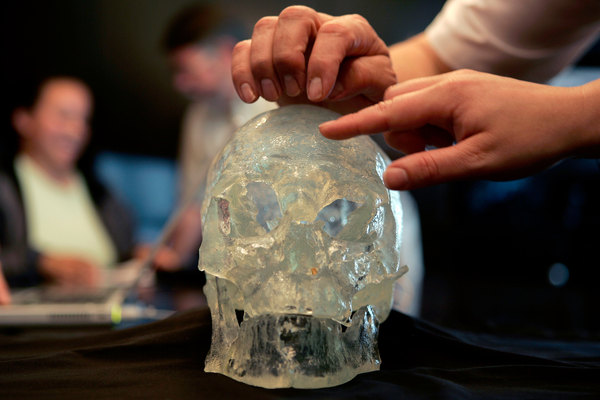After a long debate, the US Army Corps of Engineers decided Wednesday that DNA analysis proved a controversial, 9,000-year-old skeleton is related to native Americans and can be buried by their customs.
A decades-long debate between scientists and native Americans over the ultimate fate of a mysterious 9,000-year-old skeleton advanced another step Wednesday – in favor of the tribes.
Extensive DNA tests and 20 years of debate have convinced the US Army Corps of Engineers of what native Americans have always insisted: the “Kennewick Man” skeleton found in 1996 is related to the Northwest’s native American tribes.
“Obviously we are hearing an acknowledgment from the Corps of what we have been saying for 20 years,” Yakama Nation Chairman JoDe Goudy told The Seattle Times. “Now we want to collectively do what is right, and bring our relative back for reburial.
The finding is not without irony. The ancient skeleton has generated controversy because anthropologists sued to study the rare, nearly complete specimen, while native Americans wanted him re-buried respectfully.
Scientists made the final conclusion after comparing the DNA from a skeletal finger-bone to saliva samples from members of the Colville tribe.
“The reason why we can come to this conclusion scientifically speaking is because the remains were kept out for science,” Eske Willerslev, an evolutionary biologist who heads the Centre for GeoGenetics at the Natural History Museum of Denmark in Copenhagen, and led study of the skeleton, told reporters last summer. At the same time, the result “shows that he was native American.”
Both sides had to wait until science advanced to the point of allowing DNA analysis of the man’s ancient, largely degraded DNA. In the meantime, their study greatly increased scientists’ understanding of America’s ancient peoples, as Pete Spotts reported for the Monitor in June:
The volume provides a portrait of a muscular man who tipped the scales at 163 pounds, stood about 5 feet, 7 inches tall, and died at the age of 40. Although he hunted deer or antelope, his diet appeared to consist mainly of fish or marine mammals. He was right-handed, adept at knapping flint, and was a survivor. His skeleton bears evidence of two significant injuries, included a projectile point embedded in his hip bone, speaking either to an attack or a hunting mishap.
Kennewick Man also was cited as evidence for the hypothesized migration of ancient ancestors of today’s Polynesians and Ainu up along the edge of the western Pacific and across what is now the Bering Strait to North America.
The ultimate conclusion, however, was what tribal leaders said they knew all along.
“We’re looking through our options and discussing it with the other tribes involved to determine how best to get repatriation done,” Chuck Sams, spokesman for the Confederated Tribes of the Umatilla Indian Reservation, told the Monitor.
This is all part of a federal process that must precede the repatriation of the skeleton. Now that the Army Corps has decided the skeleton is related to native Americans, each tribe documents its connection to what they call the “Ancient One,” to submit to authorities. The Colville, Yakama, Umatilla, Nez Perce, and Wanapum Indians have all made claims in the past, but Mr. Sams said Oregon’s Confederated Tribes of the Umatilla Indian Reservation would file a join claim to speed the process along.
Michael Coffey, a spokeswoman for the Corps Northwestern Division, suggested February 2017 as the earliest time when affirmation of cultural ties could be completed.
Source: The Christian Science Monitor

































Leave a Comment
You must be logged in to post a comment.